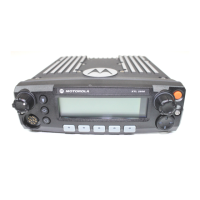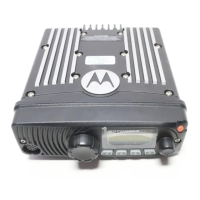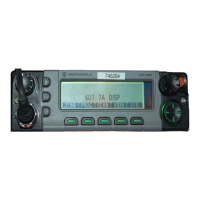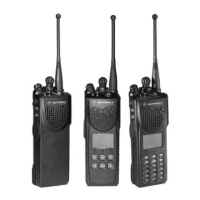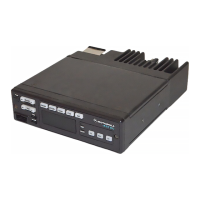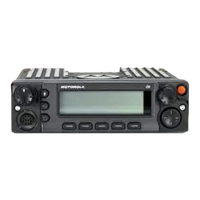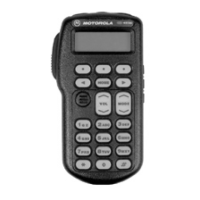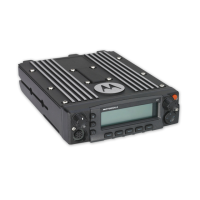June 11, 2003 6881096C73-O
3-6 Basic Theory of Operation: Analog Mode of Operation
3.6 Analog Mode of Operation
3.6.1 Receive Operation
When the radio is receiving, the signal comes from the antenna through the RF PA output network
located in the power amplifier section to the front-end receiver assembly. The signal is then filtered,
amplified, and mixed with the first local oscillator signal generated by the receiver voltage controlled
oscillator (VCO). The resulting intermediate-frequency (IF) signal is fed to the IF circuitry where it is
again filtered and amplified. This amplified signal is passed to the Abacus III IC where it is mixed with
the second local oscillator to create the second IF at 2.25 MHz. The analog IF is processed by an
analog-to-digital (A/D) converter located within the digital back-end IC, where it is converted to a
digital bit stream and decimated down to an I/Q digital sample. This digital signal is then passed on
to the DSP, where filtering and discrimination are performed in the software. For a voice signal, the
DSP routes the digital voice data to the Codec for conversion to an analog signal. The signal passes
through a Log Pot to the audio power amplifier, which drives the speaker. For signaling information,
the DSP decodes the message and passes it to the microcomputer.
3.6.2 Transmit Operation
When the radio is transmitting, microphone audio is passed to the gain control, and then to the
Codec, where the signal is digitized. The Codec passes digital data to the DSP, where pre-emphasis
and low-pass (splatter) filtering is done. The DSP returns this signal to the Codec and the signal is
then passed to a digital-to-analog (DAC) converter where it is reconverted into an analog signal. The
signal is then passed through a switched capacitor filter IC and then to the synthesizer IC as a
modulation signal for the transmitter voltage controlled oscillators. Also, transmitted signaling
information is accepted by the DSP from the microcomputer, coded appropriately, and passed to the
Codec, which handles it the same as a voice signal. Modulation information is passed to the
synthesizer along the modulation line. A modulated carrier is provided to the RF power amplifier,
which transmits the signal under dynamic power control.
3.7 ASTRO Mode of Operation
In the ASTRO mode (digital mode) of operation, the transmitted or received signal is limited to a
discrete set of deviation levels, instead of continuously varying. The receiver handles an ASTRO-
mode signal identically to an analog-mode signal up to the point where the DSP decodes the
received data.
In the ASTRO receive mode, the DSP uses a specifically defined algorithm to recover information.
In the ASTRO transmit mode, microphone audio is processed the same as an analog mode with the
exception of the algorithm the DSP uses to encode the information. This algorithm will result in
deviation levels that are limited to discrete levels.
3.8 Control Head Assembly
3.8.1 Display (W4, W5, and W7 Control Heads)
The W4, W5, and W7 control-head assemblies have an 8-character, alphanumeric, vacuum
fluorescent display. The anodes and the grids operate at approximately 34 Vdc when on and 0 Vdc
when off. The filament operates at approximately 24 Vrms. The voltage for the display is generated
by a fixed-frequency, variable duty-cycle controlled “flyback” voltage converter. The switching
frequency is approximately 210 kHz. The internal microprocessor controls the voltage converter,
which provides approximately 3.7 Vdc to the vacuum fluorescent (VF) driver and approximately
2.4 Vrms to the VF display.
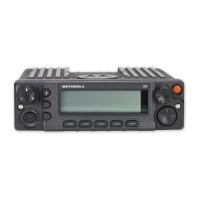
